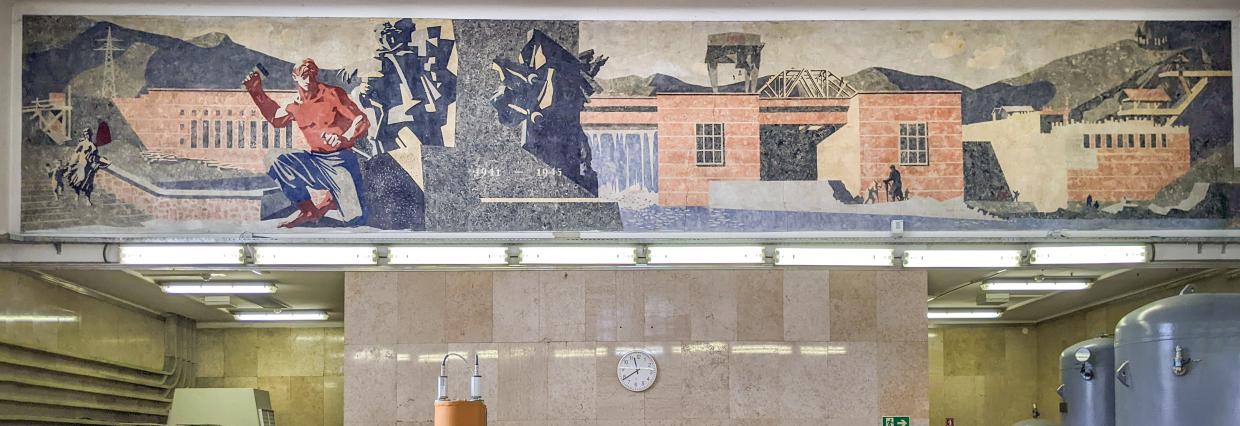
Art for the Community: Artworks Commissioned for Public Institutions, 1945–1989
Art for the Community: Artworks Commissioned for Public Institutions, 1945–1989
International conference
September 26th–27th 2024, ZRC SAZU, Ljubljana, Slovenia
During the socialist period (1945–1991) many existing and newly constructed buildings in Slovenia were complemented with specially commissioned artwork. This included mainly wall-related art, predominantly murals (frescoes, sgraffiti, mosaics), wall hangings, reliefs, and, in much rarer cases, free-standing sculptures and paintings. Such works of art were installed in a wide range of public buildings, including kindergartens, schools, hospitals, banks, post and government offices, railway and bus stations, factories, shops, restaurants, association headquarters, cultural centres, hotels, and more. They served decorative purposes, but more importantly, they were utilized for their educational and propaganda potential. Particularly in the immediate post-war years, the new Yugoslav authorities sought to legitimize the state, disseminate its values, and strengthen collective identity and the sense of belonging to the nascent Yugoslavia through deliberate, well-considered initiatives and directives concerning fine art and its placement in public spaces.
With this two-day international conference scheduled to take place in Ljubljana on September 26th and 27th, we aim to extend our focus beyond Slovenia and ex-Yugoslavia, seeking a comprehensive, global perspective on the phenomenon of art commissioned and created for public institutions during the period of 1945–1989. What stylistic or iconographic developments characterized this form of art? How did politics influence its production? How were the artworks, intended for the public, received by audiences? Who were the patrons and financiers behind public art projects? Additionally, what is the relationship between architecture and artistic interventions within it? We invite speakers to address a broad range of topics, including but not limited to presentations on individual artists or specific artworks, national or transnational developments in this art form, and issues related to the conservation of artworks, among others.
The two-day event will be held at Atrij ZRC SAZU, located at Novi trg 2, Ljubljana, on September 26th and 27th, 2024. To kick off the conference with a warm welcome, an introductory guided tour of some lesser-known Ljubljana mural sites dating from the period of 1945–1991 will be conducted on the afternoon of September 25th.
Speakers are kindly requested to cover their travel and accommodation expenses.
Interested participants are invited to submit a brief, 300-word abstract for their proposed 15-minute presentation by June 1st, 2024, to katarina.mohar@zrc-sazu.si. The organizers will diligently review all applications and communicate their decisions to the applicants by June 15th, 2024.
This conference is organized as part of the research project Art for Community. Registration and Assessment of Artworks Commissioned for Public Institutions in Slovenia, 1945–1991 (J6-50206), which delves into the realm of fine art commissioned and created for Slovenian public institutions from 1945 to 1991, and research programme Art in Slovenia at a Cultural Crossroads (P6-0061), both conducted at the France Stele Institute of Art History at the Research Centre of the Slovenian Academy of Sciences and Arts (ZRC SAZU) and funded by Slovenian Research and Innovation Agency (ARIS). For more information on the project: https://uifs.zrc-sazu.si/en/programi-in-projekti/art-for-community-registration-and-assessment-of-artworks-commissioned-for
Header: Zoran Didek, Ivan Seljak Čopič, Ive Šubic, mural at Hydroelectric power station Vuzenica, ca. 1954